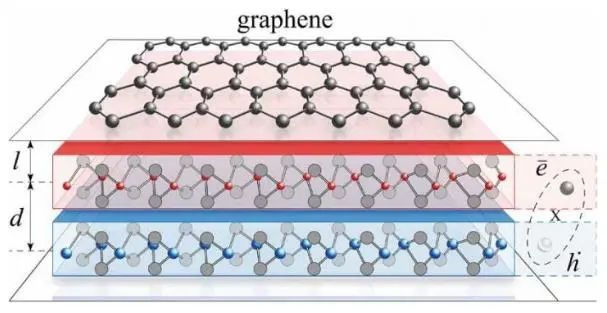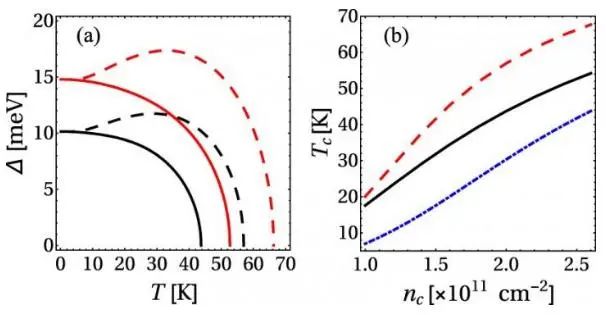Superconductivity is a physical phenomenon in which the electrical resistance of a material drops to zero at a certain critical temperature. The Bardeen-Cooper-Schrieffer (BCS) theory is an effective explanation, which describes the superconductivity in most materials. It points out that Cooper electron pairs are formed in the crystal lattice at a sufficiently low temperature, and that the BCS superconductivity comes from their condensation. Although graphene itself is an excellent electrical conductor, it does not exhibit BCS superconductivity due to the suppression of electron-phonon interaction. This is why most “good” conductors (such as gold and copper) are “bad” superconductors.
Researchers at the Center for Theoretical Physics of Complex Systems (PCS) at the Institute of Basic Science (IBS, South Korea) reported a new alternative mechanism to achieve superconductivity in graphene. They achieved this feat by proposing a hybrid system composed of graphene and two-dimensional Bose-Einstein condensate (BEC). The research was published in the journal 2D Materials.

A hybrid system consisting of electron gas (top layer) in graphene, separated from the two-dimensional Bose-Einstein condensate, represented by indirect excitons (blue and red layers). The electrons and excitons in graphene are coupled by Coulomb force.

(a) The temperature dependence of the superconducting gap in the bogolon-mediated process with temperature correction (dashed line) and without temperature correction (solid line). (b) The critical temperature of superconducting transition as a function of condensate density for bogolon-mediated interactions with (red dashed line) and without (black solid line) temperature correction. The blue dotted line shows the BKT transition temperature as a function of condensate density.
In addition to superconductivity, BEC is another phenomenon that occurs at low temperatures. It is the fifth state of matter first predicted by Einstein in 1924. The formation of BEC occurs when low-energy atoms gather together and enter the same energy state, which is a field of extensive research in condensed matter physics. The hybrid Bose-Fermi system essentially represents the interaction of a layer of electrons with a layer of bosons, such as indirect excitons, exciton-polarons, and so on. The interaction between Bose and Fermi particles led to a variety of novel and fascinating phenomena, which aroused the interest of both parties. Basic and application-oriented view.
In this work, the researchers reported a new superconducting mechanism in graphene, which is due to the interaction between electrons and “bogolons” rather than the phonons in a typical BCS system. Bogolons or Bogoliubov quasiparticles are excitations in BEC, which have certain characteristics of particles. Within certain parameter ranges, this mechanism allows the superconducting critical temperature in graphene to reach as high as 70 Kelvin. Researchers have also developed a new microscopic BCS theory that specifically focuses on systems based on new hybrid graphene. The model they proposed also predicts that the superconducting properties can increase with temperature, resulting in a non-monotonic temperature dependence of the superconducting gap.
In addition, studies have shown that the Dirac dispersion of graphene is preserved in this bogolon-mediated scheme. This indicates that this superconducting mechanism involves electrons with relativistic dispersion, and this phenomenon has not been well explored in condensed matter physics.
This work reveals another way to achieve high-temperature superconductivity. At the same time, by controlling the properties of the condensate, we can adjust the superconductivity of graphene. This shows another way to control superconducting devices in the future.
Post time:
Jul-16-2021








